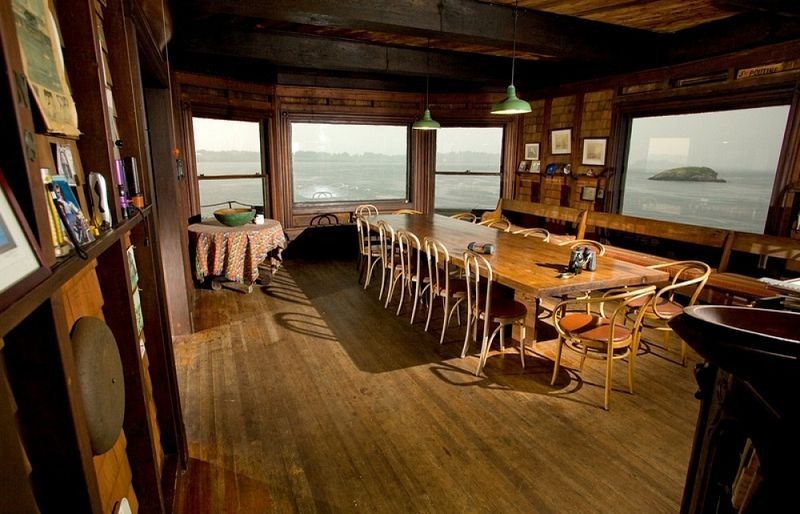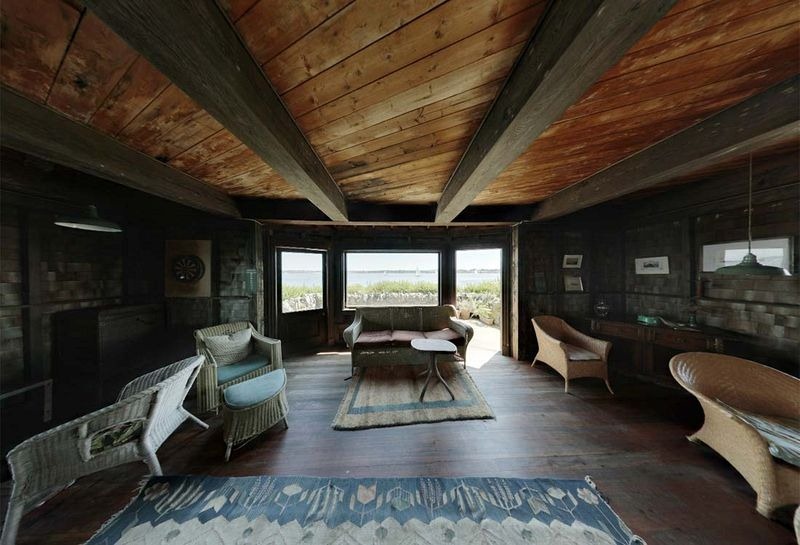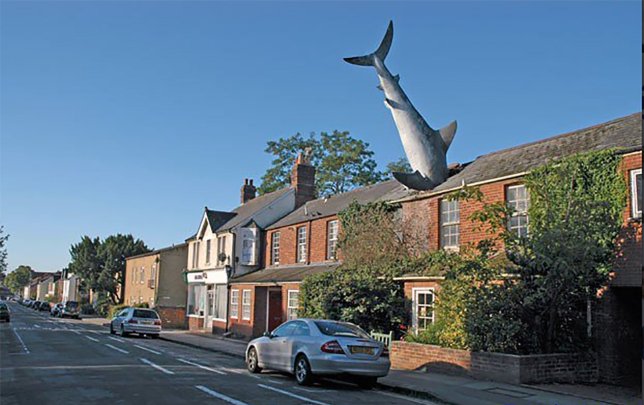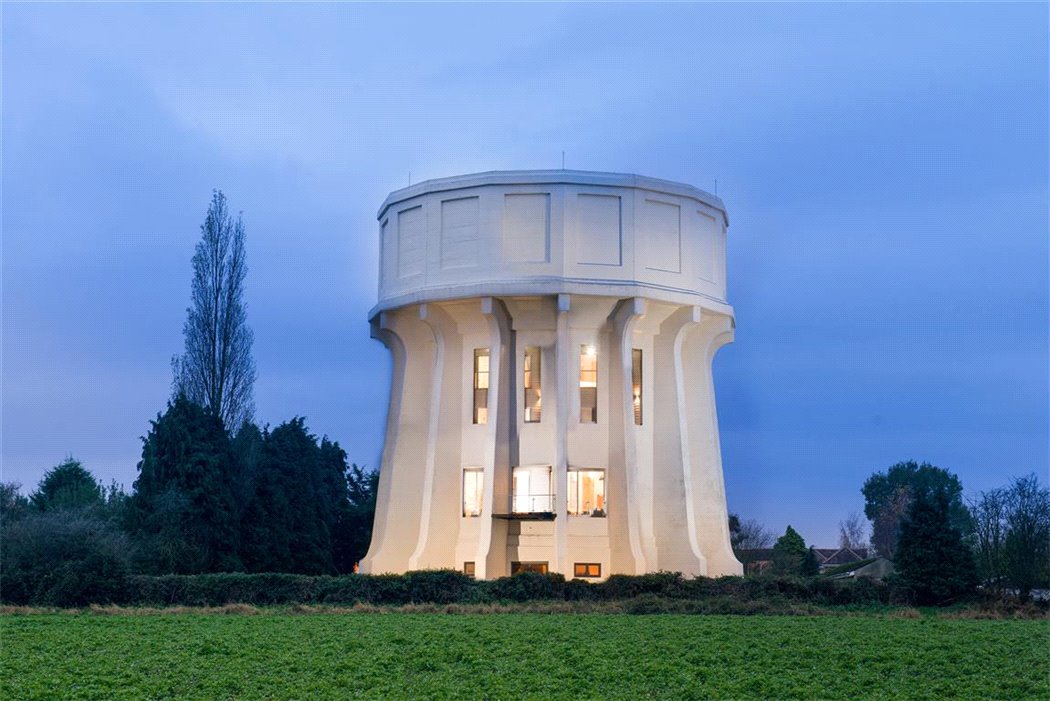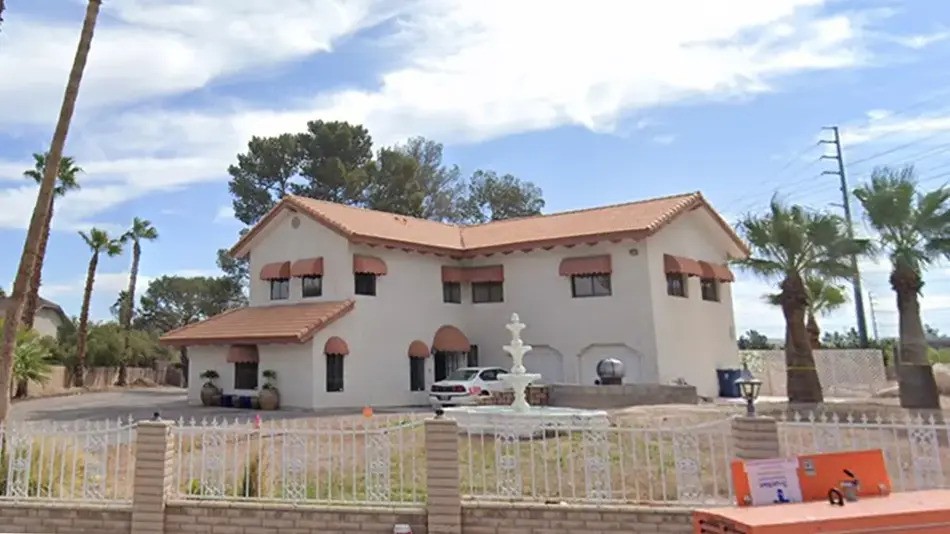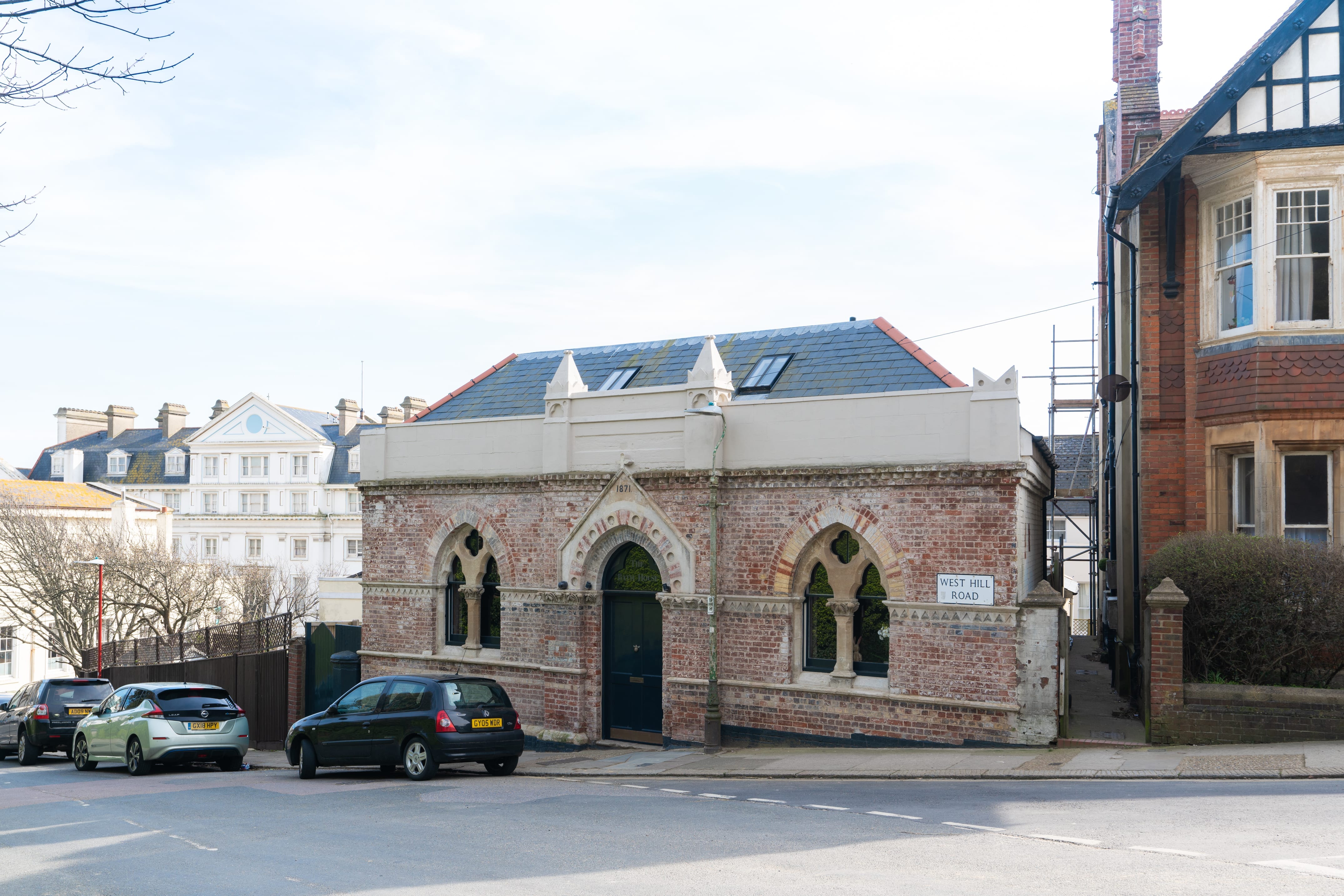Clingstone is a fairly large house perched atop a small rocky island in a group of islands called ‘The Dumplings’ in Narragansett Bay, near Jamestown, Rhode Island.
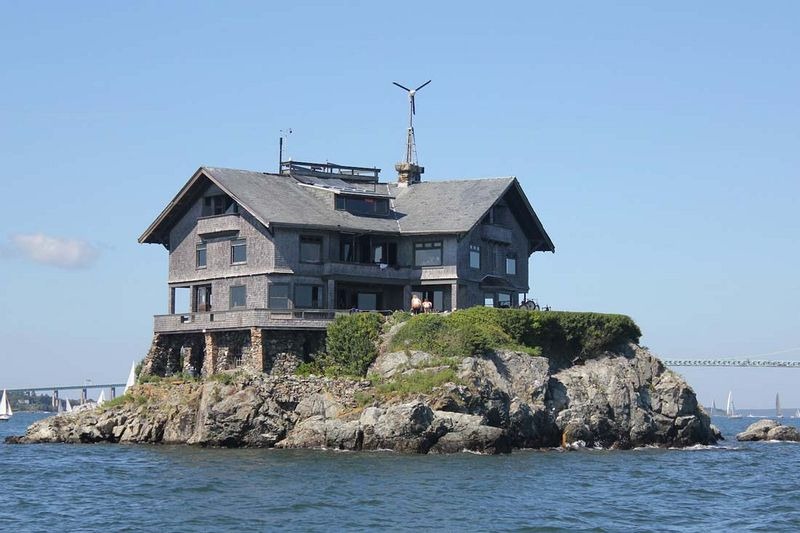
The History Of Clingstone
In 1905, Joseph Samuel Lovering Wharton, an American manufacturer and financier from Philadelphia, began building a new summer home after his previous summer home was seized by the government to make way for Fort Wetherill.

Fort Wetherill was a military base that occupied the eastern tip of Conanicut Island in Jamestown. Building of the base began in 1895 and was completed in 1903, it remained in use until the end of WWII before being turned into a state park. It is now a popular spot for people to watch the annual Tall Ships America event.
Wharton’s new summer home, which he named ‘Clingstone’, was to be built in a fairly perilous location, on a small rocky island in Narragansett Bay. A location no stranger to the occasional storm and hurricane. To help him in his vision, he hired landscape artist William Trost Richards, whose works today can be found in places such as the National Gallery, Smithsonian, and Philadelphia Museum of Art
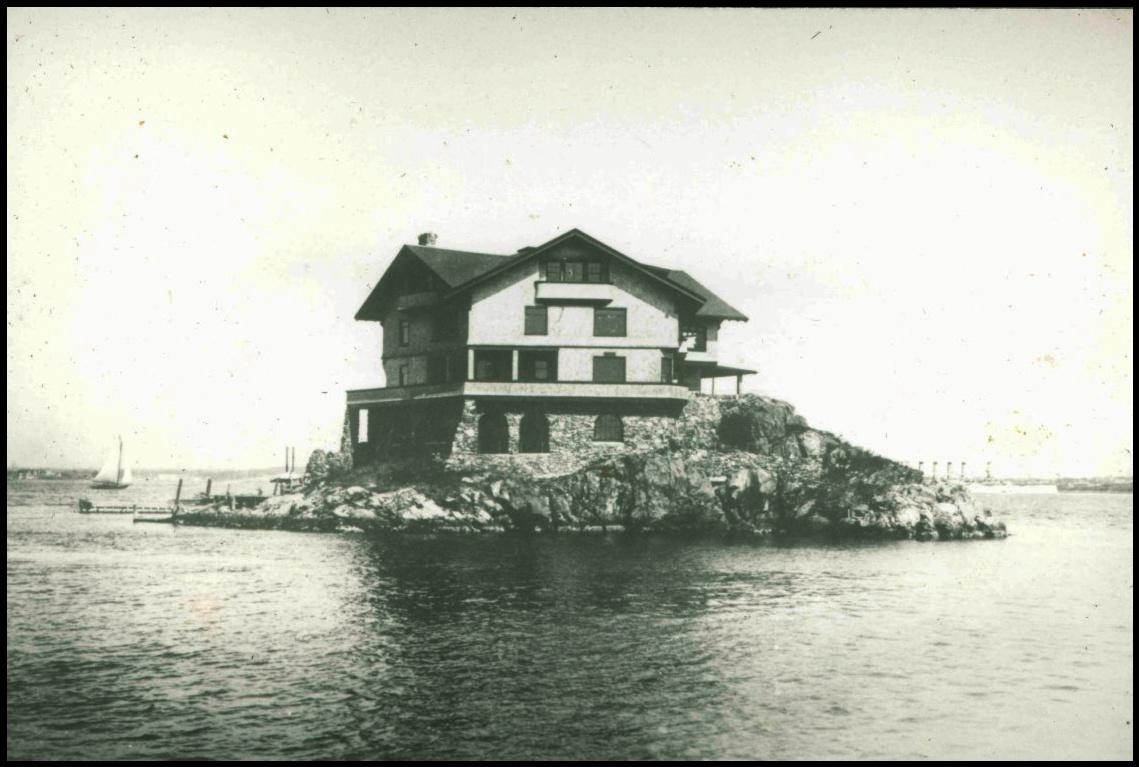
Photo Credit: Jamestown Historical Society
The three-story, twenty-three-room shingle-style home was built to withstand hurricane-force winds and was visited by Joseph S L Wharton every summer up until he died in 1931.
The property remained vacant for the next few decades until it was purchased by Boston architect Henry Wood in 1961. Wood was a distant cousin of the Whartons who purchased the property for $3,600, the amount owed in back taxes.
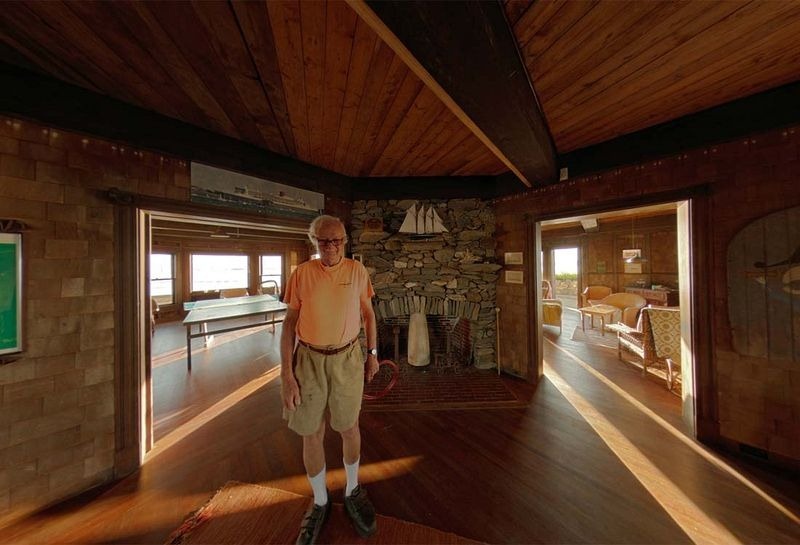
Henry Wood inside his Clingstone home.
During its vacant years, some of the property had been damaged by a hurricane that hit in 1938. While the house took some damage from the hurricane, it was a long stone jetty that featured a gymnast’s bar and rings that were blown away and never replaced.
After years of neglect, all sixty-five of the windows had also been smashed, floors had begun to rot, slate roof was damaged and Clingstone was covered in bird droppings.
When Henry Wood took ownership of Clingstone, he took pride in creating an environmentally friendly property. The house is off-grid, a windmill on the roof provides electricity while photovoltaic cells charge a bank of batteries in the basement.
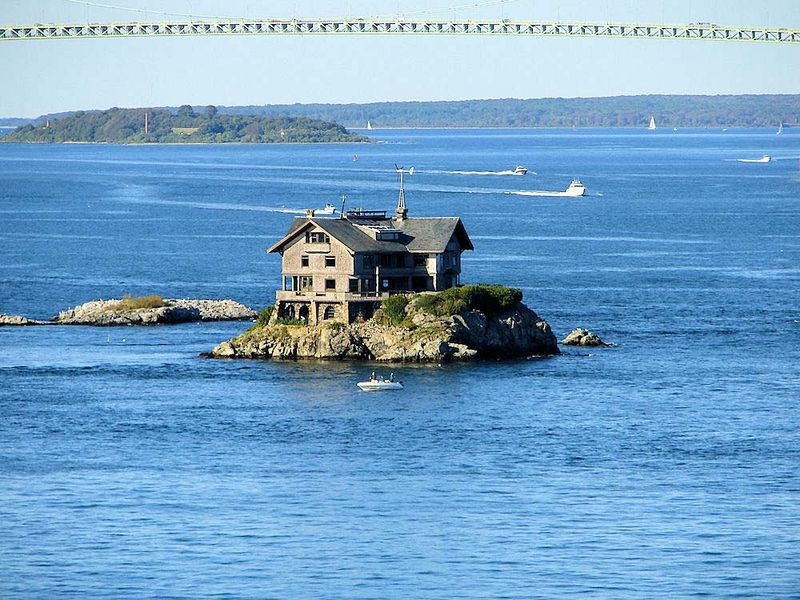
Rainwater is collected from the roof in a 3,000-gallon cistern which provides water for washing and cleaning while drinking water comes from a sea-water filtration system. Water can also be heated by solar panels.
Henry continued to visit what locales called ‘The House On the Rock’ up until he died in 2017 at the age of 87. In his obituary, one of his three sons, Dan, lovingly wrote that Clingstone was the love of his father’s life.
He also said: “When he was not working on the roof or tinkering in the basement of Clingstone, he could be found drinking Mount Gay Rum on the porch, mooning tour boats, or holding court at dinner with a diverse cast of characters”.

The House On The Rock Today
After the death of Henry Wood, Clingstone was passed down to Henry’s three sons who continue to manage the house today.
Dan said to the Providence Journal: “My two brothers and I and respective families (with lots and lots of friends) continue to manage and caretake the house”.
“My dad passed away in 2017, after having spent most of his adult life restoring and working on the house. We do occasional rentals to trusted friends to help support the upkeep, along with many, many work weekends to try to keep things up!”
